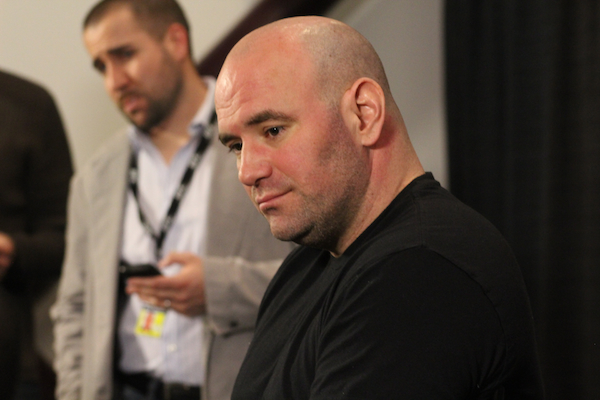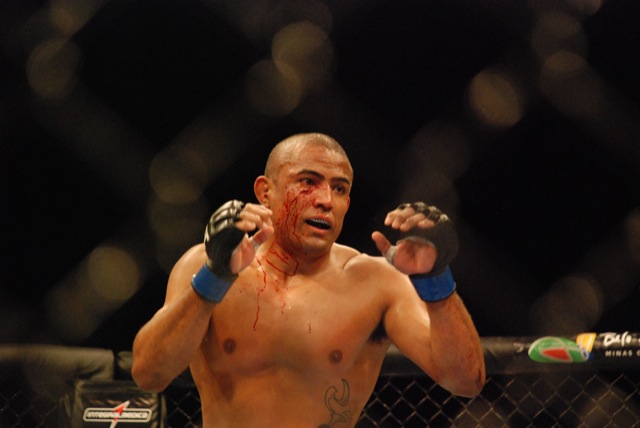
Ten years ago, I was initiated in the endearing world of Jiu-Jitsu. (Photo by Dan Rod/GRACIEMAG)
Time sure flies when you’re having fun, but that’s how it is. A few days back I made it to one decade as a reporter for your favorite Jiu-Jitsu magazine, GRACIEMAG. So I decided to drum up a list of some of the things I’ve learned over all these years of exotic travels, precious lessons and keen observation.
1. The Japanese mafia
One time I was in Tokyo and Fedor Emelianenko approached me with a bottle of the purest Russian vodka and a porn magazine. I was on the clock, Emperor, and I kept my course down the hotel corridor. It was 2003, and on that same trip I took a foray around the city streets with Wanderlei Silva and Brazilian television reporter Glória Maria. During the excursion an old guy came up to share words with me and the Chute Boxe team members. To show he was a tough guy too, he rolled up his sleeves to reveal the tattoos on his arms and showed off the stump of his pinkie finger, a sort of badge of honor to the Yakuza mafia. I learned the quick and invaluable lesson that the MMA world is surrounded by nutcases on all sides—and I felt right at home.
2. Red belt in distress
One time I was in Rio de Janeiro’s South Side and I saw a red belt jammed in a vise-like triangle applied by a totally clueless black belt. The master, already late in years, was trying to point out to the young visitor where he was going wrong, but that wasn’t sinking in for the loopy fellow, who kept cranking on the hold. The red belt’s adrenaline kicked into turbo, and he said, “You started, might as well keep going.” And he got out simple as pie, before passing guard and finishing with a Kimura-like hold I’d never seen before. I learned that, in Jiu-Jitsu as with journalism, nothing beats technique. And years of experience.
3. The greatest Jiu-Jitsu photo
One time I was at our old newsroom, in the Barra da Tijuca section of Rio de Janeiro, and we were stuck trying to figure out what photo to represent a Jiu-Jitsu match in an article. There was a decent one where the winner was doing alright, and there was a spectacular one where the loser was kicking butt. We were at an impasse, until someone remembered a wise “lesson in journalism” from Carlos Gracie Jr.: “If someone prints a photo of you on all fours with your pants down and some guy coming up behind you, what’s the point of explaining in the subtitle that it’s not how it looks?” After the chortles had died down, we picked the photo where the winner was doing alright.
4. The day Steve Jobs saved my life
One time I was traveling in the Middle East and almost beat Caio Terra—in a donkey race. We were in Jordan for a championship and decided to go up the mountains of Petra at dusk. It got dark and we could only see at all because of the light emanating from Caio’s iPod (thanks, Steve Jobs). We were rescued by three kids and their burros. I learned that a reporter needs to always keep up with the latest technology; as that can, literally, save your life. I also found out that in a mule race, the lighter man always wins.
5. Listen to the advice of veteran journalists
It was my first trip abroad as a journalist, to cover an MMA event (in the video above). The editor-in-chief at the time, Luca Atalla, called me over to discuss story ideas. I suggested we interview Randy Couture, and he backed me. But he also asked me to speak with another fellow, one even more interesting: a part bald, part long-haired promotional head honcho who had lofty ideas about the future the UFC would be taking. “Gimme a break,” I thought at the time, “how can some executive be as curious a character as an athlete?” Once I was at the location, I didn’t put in enough effort and ended up not interviewing Dana White. I learned never to question the advice of a veteran reporter.
6. The value of knowing your way around on the ground
One time I was at a samba show during my off hours and went to drop a brunette off at home. A pleasant evening turned into a nightmare when the young lady’s ex-boyfriend showed up in a wrathful, drunken state. What was the worst part? I hadn’t been initiated in Jiu-Jitsu yet. With no way of avoiding conflict, I started replaying the mount techniques I’d gone over with red-and-black belt Redley Vigio and his son, Patrick, just days before in my head. It worked: we tangled up, I landed in the mount (feet up against the aggressor’s butt, weight resting on the hips), and the two slaps that followed brought the quarrel to a close, without injuries to anyone. Except for the poor guy’s heart.
7. Highway, dust and potholes for a glimpse at Anderson Silva
One time, without batting an eye, I took on a 1,126 km (700-mile) stretch of road from Rio de Janeiro to Vitória da Conquista, in the Northeast Brazilian State of Bahia. Twas for a noble reason: to witness Anderson Silva’s return—he’d sort of lost interest in his MMA career. At the hotel pool, with no fans or interruptions to speak of, I had a chat with Anderson about his early days boxing at Corinthians team, his first spars with the Nogueiras, and his dreams for the future. I often wonder whether the king of the UFC ever misses that empty dressing room, being able to read his book undisturbed between fights; and I think that, deep down, he doesn’t really miss it that much at all.
8. Ronaldo Jacaré and the fireflies
One time I found myself caught in a triangle by Ronaldo Jacaré, and my lights nearly went out. I saw the “fireflies” all Jiu-Jitsu fighters see when they come close to getting choked unconscious. Jaca didn’t do it to be mean. He was just showing me how the way he sinks the hold is different and just as effective as the classic way of doing it; but it left me groggy. There I learned that, in the MMA world, there’s a characteristic relationship between the reporter and the subject. How do you maintain the supposedly ideal relationship between the journalist and the source, “the same cordiality you would have with your neighbor on the seventh floor,” in the words of the wise Elio Gaspari, if you often have to roll around on the ground with the interviewee? The solution is to always just go for it, but being respectful of ethics and, especially, the reader.
9. Brazil’s toughest man
One time “Men’s Journal” printed an article on the 25 toughest men in the USA (Mel Gibson and Matt Hughes made the list), and we started banter in the newsroom about who the toughest living Brazilians were. The jabber turned into a story idea, and the team pulled it off masterfully, elevating Helio Gracie to number one atop a respectable list that included big-wave rider Rodrigo Resende and the writer Rubem Fonseca, along with a handful of ambassadors and senators. The magazine garnered plenty praise, even in the nation’s capital, Brasília, but we wanted to find out what the man on the cover thought about it. So we heard the frank opinion of Professor Helio: “You’re a bunch of boneheads. You put that fag in the thong bathing suit Gabeira on there.” I learned that, as Churchill once said, success is to go from defeat to defeat without losing your enthusiasm.
10. Rodrigo Minotauro and a mother’s plea
One time I was having breakfast with Minotauro in Japan, and I noted the arrival of the former basketball player Paulo Cesar “Giant” Silva. He was all alone, looking sad and melancholy like only fake fighters and clowns do. I introduced him to Rodrigo and his mother, who was there with her sons. Once Giant Silva had gone his way, Mino’s mom said to him: “Promise me one thing: with that guy, big as he is, you will never fight. You hear me, son?” Right there I learned that I should cover MMA with the utmost sensitivity, skipping verbs like “pound to a pulp” or “demolish” in the write-ups. After all, mothers read GRACIEMAG too.



